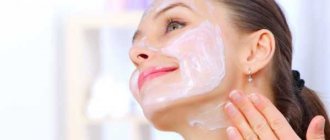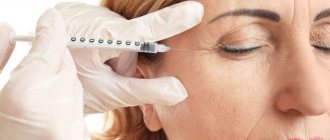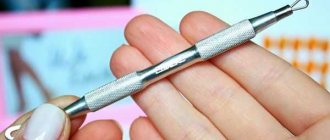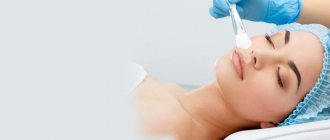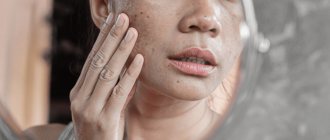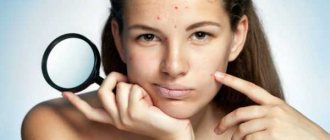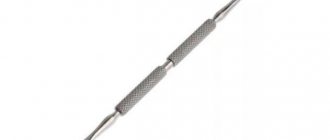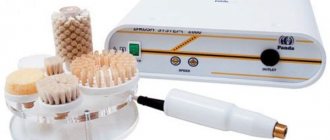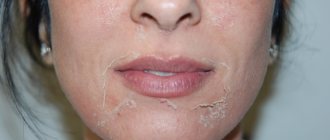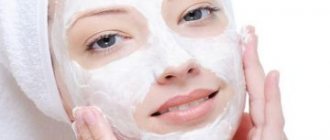Facial cleansing is one of the most common procedures in the rejuvenation laboratory cosmetology office. Cosmetologist Oksana Volchkevich shared her vision of this manipulation. ⠀
To begin with, I would like to note that the more inflammation there was, the stronger the redness and swelling will be, which can be observed within 2-3 days. During this period, it is especially important to wash your face with products with an acidic pH to relieve inflammation.
In the first days after cleansing, patients notice increased oiliness of the skin. The reason lies in the fact that sebaceous plugs that interfere with the free outflow of sebum are removed.
You can get rid of excess sebum using special wipes for removing oily shine and wiping your face with toner.
If on the second or third day you notice peeling, this is the result of exposure to acids that are part of professional cosmetics, the so-called superficial peeling (maybe 2-4 days).
But most of all, patients are frightened by sudden rashes after cleaning. Calmness: these are elements ripened in the depths that would have poured out anyway, but a little later.
Recommendations from a cosmetologist:
- On the day after cleaning, do not wash your face with water, because... the effect of the applied masks will still continue. Do not apply cream or decorative cosmetics.
- To cleanse the skin, use an antibacterial lotion or toner (without alcohol!).
- Until the inflammation goes away after cleansing, do not perform any manipulations with the skin, do not tint eyebrows/eyelashes, etc.
- If crusts form after a few days, do not tear them off by force, because... Scars and pigmentation may remain.
- After cleaning, do not visit the bathhouse, sauna, solarium, sunbathe or swim for 2–6 days, because bright sunlight can contribute to the appearance of pigmentation, and water in reservoirs can be a source of bacteria.
- Before going outside, protect your face from the sun, apply sunscreen with a high level of protection (SPF at least 15, the higher this figure, the better).
- Do not use any foundation or powder during the entire recovery period, as... they can clog newly cleaned pores.
- Repeated facial cleansing is recommended after 2-3 months for normal skin, and after 1 month for oily skin.
- Do not wash your face with hot water. This advice applies to any period of time, but is especially relevant after cleansing your face. Hot water stimulates sebum production, which can cause clogged pores.
- Do not drink alcohol, even weak alcohol. Alcohol stimulates blood circulation and increases water retention in tissues, which will worsen swelling.
- You can’t use a scrub for a week, even the softest one. The skin is already traumatized after cleansing your face; there is no need to subject it to even more stress.
- Do not touch your face unless absolutely necessary. This can cause irritation of the thin, sensitive epidermis, causing infection in wounds and cracks. Do not let children touch their faces. Be careful with male stubble.
- Do not wash with running tap water. It contains a lot of bleach and chemical impurities used for cleaning and disinfection. For sensitive skin, I recommend washing your face with boiled water on the first day after cleansing.
- Never use soap to wash your face. It dries out epidermal tissues due to the high content of alkaline compounds.
- Change the pillowcase.
In the cosmetology office “Laboratory of Rejuvenation” they quickly and painlessly do all types of facial cleansing - mechanical, ultrasonic, combined. Israeli professional cosmetics are used in the work.
Reasons for the formation of post-acne
- Long-term inflammatory process. The longer acne lives on the face, the deeper it wounds the skin, breaking its layers. To avoid trouble, do not delay treatment.
- Extrusion. By mechanically acting on a pimple, you injure the skin around and under it. The likelihood of getting a scar increases. And if an infection gets into the wound from your hands, inflammation is guaranteed.
- Mistakes in acne treatment. To ensure that pimples disappear from your face without leaving visible reminders, get rid of them together with a dermatologist. Self-medication and cosmetic procedures of dubious quality can leave not only a lasting impression, but also scars and uneven relief on your skin.
How does combined cleaning work?
It all starts with a consultation with a cosmetologist, who will examine the skin, determine its type, existing deficiencies, inform about the possibility of the procedure and how many sessions will be needed. It is uncomfortable to stand during the session, so the patient is placed on the couch, and the specialist begins to work, starting to carefully prepare the skin. It is wiped with an antiseptic, and a soft scrub is applied to it to avoid unnecessary injury (usually preference is given to a sugar or coffee scrub). After 5-10 minutes, the composition is removed using a damp cloth soaked in antiseptic.
Next, the cosmetologist begins steaming the skin, during which the patient is asked to hold his face for several minutes over a special device that releases steam. A special balm can be applied to the skin beforehand to better open the pores. A softening gel is applied to the cleansed face. Next, the specialist begins to move an ultrasonic device along the contaminated areas of the face. The process continues for several minutes, after which the contaminants that have come to the surface are carefully removed along with the remnants of the gel. After the surface has dried, the specialist carefully examines it, noting the location of the remaining subcutaneous imperfections.
On the eve of cleansing, it is not recommended to drink alcoholic beverages or sunbathe in the sun to ensure normal pore opening.
The stage of manual cleansing begins, during which subcutaneous pimples, comedones and other imperfections are carefully pierced with a special needle and lifted with a spoon, ending up on the surface of the face. Removing easily visible and not too deep stains can be done using your fingers. Squeezing and cleaning the surface is performed using disposable antiseptic wipes.
Manual cleaning is quite painful and often causes slight bleeding in the areas being cleaned. For heavily contaminated skin, be patient.
At the end of the procedure, the master applies several masks to the face. The first of them is antibacterial, which disinfects the surface of the face. Next, an alginate mask is applied to nourish and soothe irritated and damaged skin. Finally, the face is covered with a special cream or ointment to quickly heal the wounds.
1). Fractional CO2 grinding.
Damaged areas are “evaporated” using a special carbon dioxide laser. After this, at the site of laser exposure, the skin restoration process is activated. Simplified, the procedure looks like this:
- Preparation. It is advisable to avoid exposure to the sun (tanning) for 15–20 days.
- Cleansing the skin and applying an anesthetic.
- Working with CO2 laser.
- Applying healing cream.
After resurfacing, the skin takes 5 to 10 days to recover.
Advantages:
- Action exclusively on the problem area.
- Safety of the technique.
- Lasting, visible results that only increase over time.
- A quick way to remove scars and stretch marks, including old ones.
- Suitable for any skin type.
Flaws:
- There is a recovery period.
- It is recommended to carry out the procedure in the cold season.
- Painful sensations are possible.
Contraindications
- Infectious, viral skin diseases.
- Oncology.
- The period of gestation and feeding of the baby.
- Age under 18.
- Mental disorders.
CO2 grinding has many positive reviews among girls. In the fight against post-acne, this procedure gives noticeable results. The course of procedures depends on the severity of post-acne marks.
3). Chemical peeling
The main essence of the procedure is the destruction of the upper, dead layers of skin, as well as the launch of restoration processes. Depending on the purpose and degree of skin damage, medium or superficial peeling is performed.
Chemical peeling is carried out as follows:
- Cleansing, getting rid of cosmetics.
- Application of a special chemical.
- Waiting (15 – 30 minutes, depending on the product and skin).
- Removing the drug.
- Application of restorative agents.
Advantages:
- Visible effect.
- Reduction of rashes on the face.
- Improved complexion.
Flaws:
- Some peels have a seasonality and recovery period.
Contraindications:
- A tan.
- Pregnancy.
- Cancerous tumors.
- Presence of cuts and scratches on the face.
- Manifestations of influenza and colds.
In order to determine which procedure is right for you, you need to come for a personal consultation with a cosmetologist. The doctor will conduct an examination and select the best procedure for you to remove acne marks and restore your skin to a healthy and radiant appearance!
Indications for facial cleansing
Facial cleansing is a popular and effective cosmetic procedure. When performed regularly, cleansing improves metabolic processes in cells, evens out the complexion, cleanses, tones, rejuvenates and generally improves the condition of the skin.
Facial skin cleansing helps to cope with the following skin imperfections:
- enlarged pores;
- acne;
- comedones;
- hyperactivity of the sebaceous glands;
- decreased elasticity;
- dull complexion.
| Facial cleansing effectively solves the problems of oily and combination skin. But owners of other skin types should not refuse this procedure in order to keep it healthy. |
Stages of facial cleansing
Any facial cleansing, regardless of its type, includes several stages.
1.
Makeup removal
.
Before the procedure, the skin must be thoroughly cleansed. Micellar water or hydrophilic oil
will help free cells from cosmetics, dust, and sebum .
2. Cleansing
.
To remove remnants of makeup remover products and better cleanse the skin, at the second stage of cleansing you need to use a gel or foam cleanser. Enzyme powders
perfectly cleanse and prepare the skin for further procedures . Afterwards, you should restore the pH of the skin with toner.
3. Preparing for cleaning
. Next, you need to soften the surface layer of the skin to open the pores. Previously, this was done by physically warming the skin using steam or hot towels. But this negatively affects the condition of skin vessels.
Today, special chemical disinfectants are used. Liquid consistency of lotion for deep cleansing of pores Pore-Clean Lotion
works in the sebaceous duct.
And it is complemented by a denser hydrating gel Intensive Action Gel
. It effectively acts on the surface of the skin, softens the stratum corneum of cells before cleansing and prepares the skin for active cleansing. The product contains polysaccharides and amino acids, which moisturizes and soothes the skin, saturates it with bioflavonoids and microelements, and improves its protective properties.
4. Cleaning
.
At this stage, the cleaning itself is performed using the selected technique. After the procedure, it is imperative to soothe the skin. Azulene-Calm Lotion for face with azulene
reduces irritation, has a healing effect, and removes redness. Thanks to the combination of allantoin and panthenol, it activates cell regeneration and accelerates the renewal of the epidermis after cleansing.
5. Applying a mask
. Masks will help restore the skin and close pores after active exposure:
- sebum-regulating Essential Mask
has a soothing and mattifying effect, reduces redness after cleansing, and promotes skin renewal; - alginate with tea tree and myoxinol Myo-Lifting
cools, soothes, moisturizes, has a local antibacterial effect, normalizes skin texture, and has a modeling effect; - soothing Soothing Mask
quickly relieves redness, has a resolving effect, tightens pores, pleasantly cools the skin, restores the protective barrier of the dermis that prevents the penetration of bacteria; - Anti-Acne Intensive care mask for oily problem and oily skin
soothes the skin, relieves swelling and redness, and tightens pores. Has a bactericidal and sebum-regulating effect; - NEW! Absorbable mask with a pigment-constricting effect Post-Acne Balance Mask
activates metabolic processes, tightens pores, and prevents the appearance of swelling and stagnant spots. Cleanses the skin of toxins, dries, improves microcirculation and skin color.
6. Final care
.
The cleaning procedure should be completed with restorative care. Azulene Face Cream
contains azulene, which relieves irritation and soothes the skin, and allantoin, which stimulates cell renewal and prevents the formation of comedones. The product has a healing effect, effectively relieves redness and normalizes skin color.
2). Carrying out Collostotherapy
Collagen is needed to restore skin. The essence of the treatment is that the cosmetologist makes injections into the damaged areas and injects the drug Collost (a natural collagen complex) there. Protein comes from animal material.
Advantages:
- No rehabilitation period.
- Thanks to local anesthesia, it is painless.
- Gives a quick, lasting effect.
Flaws:
- Possibility of allergies (before the procedure, an allergy test for the drug Collost is performed).
Contraindications include:
- Problems with blood clotting.
- Allergy.
- Pregnancy.
- Taking hormones.
Already after the first session of Collostotherapy, results are visible. The number of injections is prescribed by a cosmetologist. It all depends on the condition of the skin.
